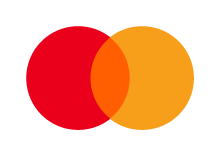The Vitalistic Healing Mode
Modern Western medicine focuses on the science of curing. While treating symptoms and disease may well be an important part of wellness, the philosophy behind it is considered by many to be flawed. That’s because the concept of curing focuses only on managing or eliminating localized physical symptoms rather than viewing the sick part of the body as part of a much larger whole.
It contends that life can be explained in terms of physical and chemical processes alone. That, however, is the exact point of contention addressed by those who believe that there is a third, separate and distinct life force that must be included in the explanation of existence of higher animals.
The Vitalistic Healing Model calls this the vital force, or élan vitale, and operates – quite successfully – on the concept that life cannot be explained without including this cornerstone element. It’s an integral part of our “selves” that can’t be separated and is always there, and always a part of, the physical aspects and processes.
The Birth of the Vitalistic Healing Model
The man who laid the foundation for this realization was Johann Friedrich Blumenback in the nineteenth century. He proposed that there is an innate impulse within us all to move toward self-development that can’t be fully explained by chemical and physical processes alone. This Thus the vitalistic healing model was born.
As the concept took root, other vitalists worked toward advancing and understanding the force and proposed that it wasn’t just a source that was part of life, but of healing and health as well.
As the nineteenth century advanced into the twentieth, advances in the understanding of chemical processes allowed for quantifiable study and objective measurement, and Western Medicine moved even further away from the holistic point of view. Medical technology advanced and mechanical and electrical therapies gained traction, pulling people away from the vitalistic movement and into mainstream medicine that believed that disease was a localized problem that could be cured.
What is the Vitalistic Healing Model?
Vitalists and other holistic believers understood that physical illness, disease, and dysfunction were simply symptoms of a greater problem that needed to be acknowledged and healed rather than “cured” by drugs and non-surgical (or surgical) treatments that only address the symptom.
For the disease or other physical issue to be resolved, healing of the vital force was needed, not curing. The difference is that healing holistically addresses the underlying cause – mainly the refusal or inability to feel the underlying emotion that’s causing the symptoms.
The physical body is comprised of three components: the actual physical structure, the emotional body that includes the limbic system and structures related to it, and the spiritual body that includes chi and the chakras. The vital life force, or the Wisdom Within, recognizes when there’s a problem and if you refuse to acknowledge and address it, sends out warning signals of the dysfunction in the form of symptoms such as discomfort, pain, illness, and disease. Western medicine will then treat that symptom, but vitalists will recognize it or what it is – a serious notification that there is something drastically wrong. The next step, then, is to work on healing holistically by working to bring the body back to homeostasis.
What is Homeostasis and Why is it Important?
Broken down, the idea of homeostasis means that the body always strives to right itself and maintain balance. Ideally, it’s in a perpetual state of self-regulation and changes very little by compensating for the disruptions caused by external influences. That helps it maintain equilibrium and stay well. This was a concept put forth by Claude Bernard (1813-1878), a French scientist and “experimental vitalist.”
Dr. Bernard put forth perhaps the most famous phrase of the biological sciences: “the constancy of the internal environment is a condition paramount to the independent life of higher animals.”
Almost 100 years after Dr. Bernard put forth his theory, an American physiologist named Walter B. Cannon (1871-1945) popularized the term homeostasis, postulating that the human body has an inherent need to be in balance, and that the body will adapt in order to maintain that balance.
Because every part of your body is interdependent with all of the other parts – including all physical, emotional, and spiritual components, if one of them is disrupted, then you’re not in balance, but your body will do everything it can to restore you to that state. If it can’t, you start to see physical symptoms.
After all, a car can only run so long without oil before you start to hear noises in the motor. If you continue to ignore those noises, they get worse until the motor blows completely. Still, the car continued to run, attempting to right itself, before it reached a state where it simply couldn’t.
That’s homeostasis. And, just like the car, your body will send you warnings. Heed them.
Modern Vitalism
The philosophy of vitalism has evolved and progressed to the point that it is today. Vitalists believe, much like Chinese practitioners of old, that the human body is more than a total of its individual parts and processes, but that all of those parts are interrelated and interdependent. The basic principle is that same as that set forth by Dr. Bernard: there’s an independent force, or Inner Wisdom, that is self-determining and always evolving, independently and based upon what it takes to maintain homeostasis.
It guides us so that we remain healthy and understand ourselves better mentally, emotionally, physically, and spiritually. It’s a never-ending, constant process though. As we exist and we continue along our paths, we get to know ourselves better and can grow in all areas. True healing can only take place by becoming more aware of what we’re feeling at any given moment, and acknowledging those feelings.
The hardest part, maybe, is that those feelings aren’t always going to be happy and pleasant. Sometimes they’re going to be challenging, but both good and less good feelings are opportunities to grow and get to know yourself better. The better in touch you are with your feelings and your environment, the more vibrant and alive you’ll feel.
The goal is to be able to access and express the pure, unconditional love that is at the very heart of us all. We need to feel it for ourselves before we can feel it for others.
You Must Have the Willingness to Change
Homeostasis doesn’t mean that you always stay the same – it means that you always remain balanced and in harmony. In fact, healing and growing require change. The symptom – whether it’s emotional or physical – is a sign that you need a change.
You must be willing to let go of past emotions and behaviors and be ready to change opinions, attitudes, and belief systems that are obstacles to your personal growth.
If you resist change, you resist growth, and your body won’t be able to maintain homeostasis, nor will you be able to feel that pure, unconditional love that you crave.
This entire process is managed by the Internal Wisdom. It speaks with the mind by using your body’s energy systems and when this channels of communication are blocked, the flow of energy between one part of your body and the next is disrupted, which creates imbalance and can lead to emotional conditions or physical illnesses.
But, when your educated, open mind recognizes what needs to be done and is willing to embrace the changes, the energy will flow well and homeostasis will be maintained. The last thing you want to do is hobble the internal healing process by ignoring it or treating the symptoms only.
In short, the vitalistic healing model is about acceptance and the need to be willing to learn about yourself and the environment so that you may continue to grow and keep the channels open so that you may grow. That’s the key to true health and wellness.
Author: Theresa Crouse

This work is licensed under a Creative Commons Attribution-NonCommercial-NoDerivatives 4.0 International License.

 Previous Post
Previous Post Next Post
Next Post



